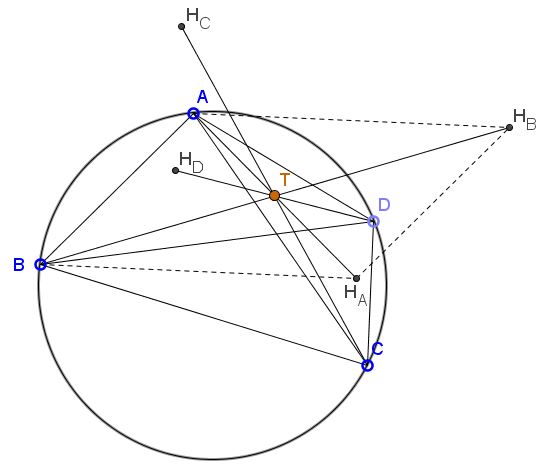Anticenter and Orthocenters
What Might This Be About?
Problem
Given cyclic quadrilateral $ABCD,$ $H_A$ as the orthocenter of $\triangle BCD,$ and $H_B,$ $H_C,$ $H_D$ are defined cyclically. Let $T$ be the anticenter of $ABCD.$

Then $T$ is the common midpoint of $AH_A,$ $BH_B,$ $CH_C,$ and $DH_D.$
Solution
We'll show that $AH_A$ and $BH_B$ have the same midpoint. To see that, note that $ABH_AH_B$ is a parallelogram. This is because, on the one hand, $AH_B$ and $BH_A,$ both being perpendicular to $CD$ are parallel.

$AH_B=2R\cdot |\cos\angle CAD|=2R\cdot |\cos\angle CBD|=BH_A,$
where $R$ is the circumradius of the quadrilateral $ABCD.$ Thus, indeed, $ABH_AH_B$ is a parallelogram and its diagonals $AH_A$ and $BH_B$ cross at their common midpoint. Similar argument works for the other pairs of segments $AH_A,$ $BH_B,$ $CH_C,$ and $DH_D.$
Acknowledgment
The theorem and the proof come from the paper Newton and Midpoints of Diagonals of Circumscriptible Quadrilaterals by Titu Andreescu, Luis Gonzales and Cosmin Pohoata (Theorem 2).
|Contact| |Front page| |Contents| |Geometry|
Copyright © 1996-2018 Alexander Bogomolny73581355
